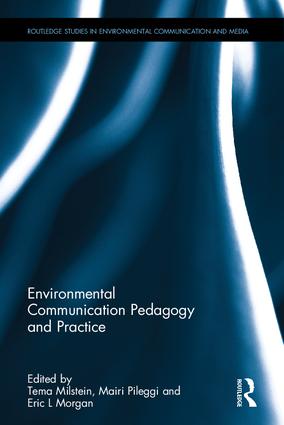"Environmental Communication Pedagogy and Practice" - Professor López
Communications Professor Antonio López recently published two chapters in Environmental Communication Pedagogy and Practice (Routledge 2017). The first chapter is titled “Developing Visual Literacy Skills in Environmental Communication Classes,” while the second is titled “Using Infographics to Put Environmental Communication into Practice.”
Professor López has 15 years experience as a media educator and researcher. A member of John Cabot University’s faculty since 2008, he is Chair of the Department of Communications. He has published numerous journal articles and book chapters about media education and youth media. Professor López teaches Introduction to Visual Communication, Writing Across the Media, Media Culture and Society, Digital Media Culture, Media and the Environment, Writing Across the Media, Advanced Media Theory, and Senior Capstone Project.
Developing Visual Literacy Skills in Environmental Communication Classes – ABSTRACT
Visual literacy skills are essential in a society that increasingly communicates with images, especially in the realm of environmental politics and the public sphere. This is best exemplified by how political communicators use the term “optics” to designate media spin. For example, the image of President Obama visiting a melting glacier in Alaska gives optics for the challenges of climate disruption and the intention of the White House to promote policy about it. Political communicators rely on optics because “sight is by far the most trusted of our senses, and the one that has the greatest impact on our conception of reality” (Apkon 2013, 75). In this essay I introduce a pedagogical approach to engaging visual communication that combines analytical methods developed for art history, media literacy, medium theory, and environmental communication. This multidisciplinary framework for analyzing visual communication prepares students to think critically about visual media and enables them to harness it for environmental communication.
Using Infographics to Put Environmental Communication into Practice – ABSTRACT
The goal of this assignment activity is to create a visual form of environmental communication using free online infographic tools, prompting students to put into practice a variety of concepts learned in an introductory level course. Infographics are increasingly used to quickly explain and map issues, and are used frequently in publications (journals, magazines, newspapers) and shared on social networks (Pinterest, Facebook, Twitter, Tumblr, Flickr, Stumbleupon, Digg, Reddit, etc.). The planning and creation of an infographic involves visual expression and creativity, embedding basic communications skills that are transferable to other types of media (such as journalism, graphic design, or filmmaking); learners develop multifaceted communication skills by having to visualize complex concepts and distilling them into a simple message for a targeted audience. Learners with no experience creating infographics can successfully make one. By creating an infographic, students must conceptualize and make a claim about an environmental problem to demonstrate symbolic action (Cox 2009), requiring them to develop a discursive strategy based on concepts and principles of environmental communication. In particular, students are required to combine visual and written techniques to communicate an issue, and perform research that requires a variety of literacy skills, such as information literacy (the ability to ascertain the validity of research and seek out sources of information) and visual literacy (the ability to meaningfully connect imagery with the communication of ideas).






